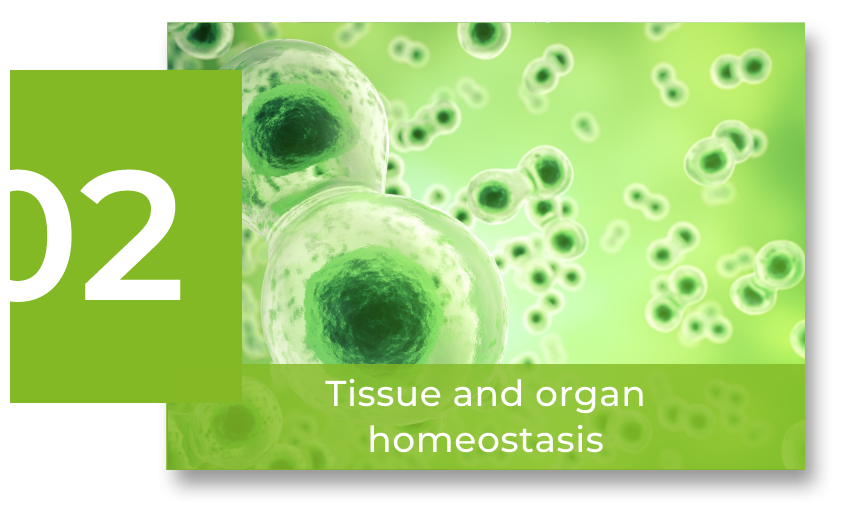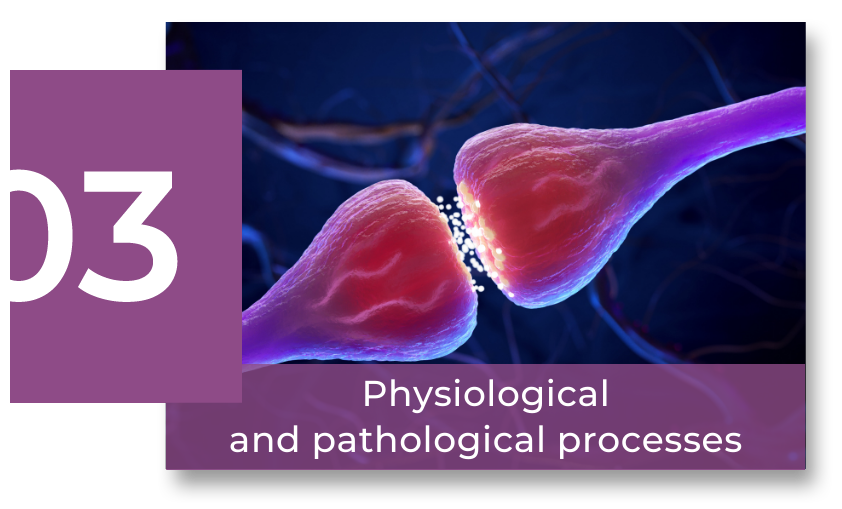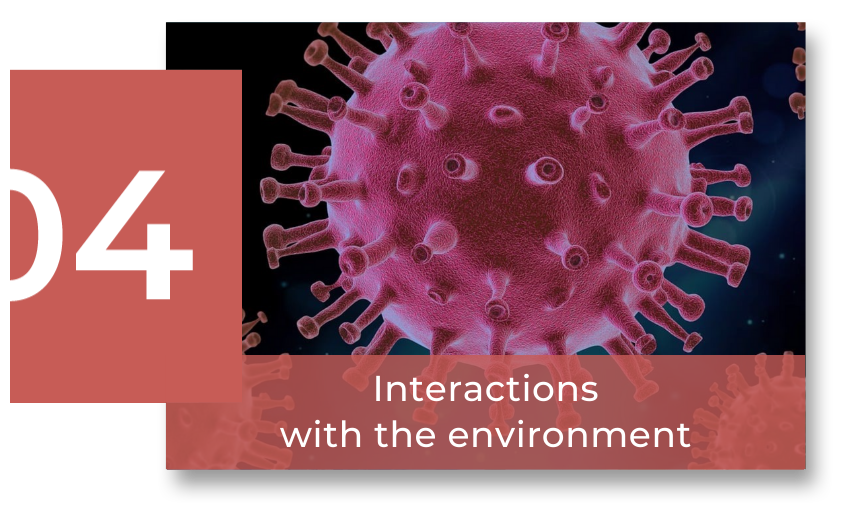Scientific Program
Interactions with the environment
RESEARCH GROUP
Viral immunology

Margarita Del Val Latorre
Our purpose is to improve the control of chronic and opportunistic infections by the immune system, using new technological platforms that induce a good cytotoxic T lymphocyte response. In partial immunodeficiency models we want, in the long term, to improve the design of new vaccines, especially targeting vulnerable populations, such as immunocompromised individuals and the elderly.
Research
The objective of the laboratory focuses on improving the control of the immune system against chronic and opportunistic infections. In these situations, the cellular immune response plays a crucial role, in contrast to the role played by antibodies in acute infections, which constitute the target of currently available vaccines. The ultimate goal is to contribute to the rational design of vaccines. Despite the accumulated knowledge, we still do not have vaccines that generate a powerful and long-lasting response from T lymphocytes.
Our work also focuses on vulnerable populations, such as immunocompromised individuals and the elderly. We seek to improve the effectiveness of vaccines and measure the strength and durability of the immune response after vaccination. This allows us to identify critical parameters of vaccine-mediated protection in these populations.
To achieve this, we analyse basic aspects of the antiviral cellular immune response and vaccination. We used mouse models with partial immunodeficiency, combined with infection with two viruses relevant for vaccine development. Additionally, we are exploring new technological platforms that facilitate cellular response by transporting antigens to the appropriate cellular compartments for processing.
As an experimental model, we used mice deficient in the transporter associated with antigenic processing (TAP). This transporter plays a central role in the antigen presentation pathway through MHC class I molecules (MHC-I), which are recognized by pathogen-specific cytotoxic CD8+ T lymphocytes. These lymphocytes mediate the elimination of infected cells in vivo.
TAP is frequently inactivated in metastases and is also the target of viruses. In both cases, this results in evasion of detection and clearance by CD8+ T cells.
In our laboratory, we are identifying viral peptide epitopes that are presented by MHC-I in the absence of TAP. We also investigated the proteases and antigenic processing pathways that generate these epitopes in infected cells. Furthermore, we evaluated their contribution to the CD8+ response in these animals.
The viral infection models we use are vaccinia virus and mouse cytomegalovirus. The vaccinia virus, a poxvirus like mpox, is the vaccine vector of the first and greatest success in the use of vaccination in public health: the eradication of smallpox, officially declared in 1980. Cytomegaloviruses are relevant as potential vaccine vectors, since during latent infection they present viral antigens continuously, without associated pathology, leading throughout life to a high number of virus-specific T lymphocytes, the so-called inflationary memory.
Finally, in our continuing study of the immune response to poxviruses, we are exploring how this information can be applied to new emerging diseases. One of the most recent examples is the monkeypox (Mpox) outbreak. In particular, we are looking at the protective immune response in the elderly who received smallpox vaccinations more than fifty years ago, and their ability to respond to new viral threats.
Group members

Luis Carlos Antón Canto
Lab.: 204 Ext.: 4553
lanton(at)cbm.csic.es

Margarita del Val Latorre
Lab.: 204 Ext.: 4460
mdval(at)cbm.csic.es

Manuel Ramos Alvarez-Buylla
Lab.: 204 Ext.: 4461
mbuylla(at)cbm.csic.es

Elena Campos Sánchez
Lab.: 204 Ext.: 4461
ecampos(at)cbm.csic.es

Cristina Rodríguez Rojas
Lab.: 204 Ext.: 4461
cristina.rrojas(at)cbm.csic.es

Andrés Soto Zaragoza
Lab.: 204 Ext.: 4461
andres.soto(at)cbm.csic.es

Carolina Rubio Cachazo
Lab.: 204 Ext.: 4461
carolina.rubio(at)cbm.csic.es

Laura Luna Gutiérrez Oliva
Lab.: 204 Ext.: 4431
llgutierrez(at)cbm.csic.es

María Fernández Martínez
Lab.: 204 Ext.: 4461

Cristina González Díaz
Lab.: 204 Ext.: 4461
cristina.gonzalez(at)cbm.csic.es
Selected publications
N-ras couples antigen receptor signaling to Eomesodermin and to functional CD8+ T cell memory but not to effector differentiation
Salvador Iborra et al.
Vaccine vectors: the bright side of cytomegalovirus
Andrea C Méndez et al.
Endogenous TAP-independent MHC-I antigen presentation: not just the ER lumen
Margarita Del Val et al.
Immunogenicity and efficacy of a novel multi-patch SARS-CoV-2/COVID-19 vaccine candidate
Perdiguero, Beatriz et al.




